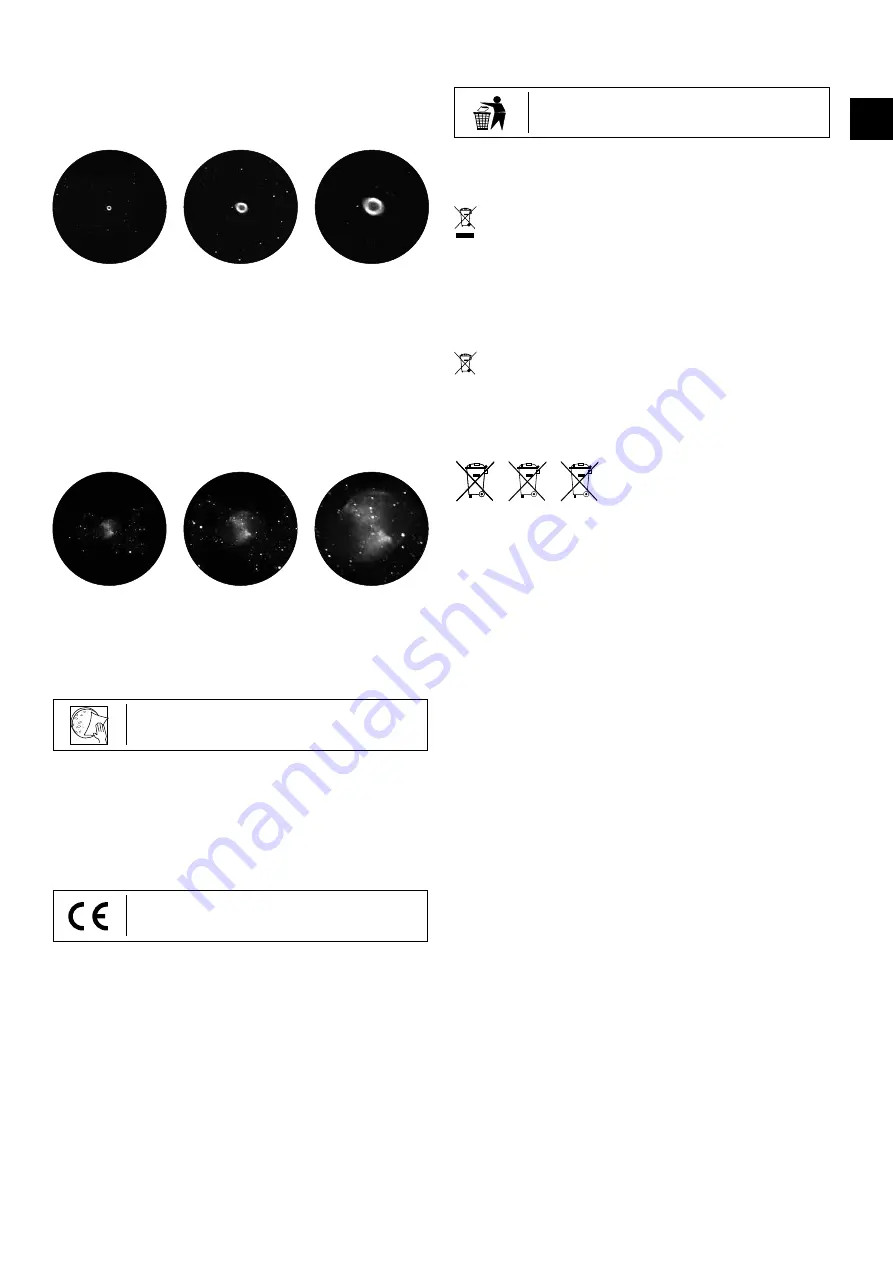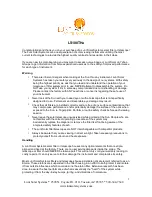
EN
13
Constellation Lyra: The Ring Nebula (M 57)
Right Ascension:
18
h
53
m
(hours : minutes)
Declination:
+33° 02'
(Degrees : minutes)
Distance:
2,412 light years from Earth
The famous Ring Nebula (M57) in the Lyra constellation is often viewed as the
prototype of a planetary nebula. It is one of the magnificent features of the
Northern Hemisphere's summer sky. Recent studies have shown that it is prob-
ably comprised of a ring (torus) of brightly shining material that surrounds the
central star (only visible with larger telescopes), and not a gas structure in the
form of a sphere or an ellipse. If you were to look at the Ring Nebula from the
side, it would look like the Dumbbell Nebula (M 27). When viewed from Earth,
we are looking directly at the pole of the nebula.
Constellation Vulpecula (Little Fox):
The Dumbbell Nebula (M 27)
Right Ascension:
19
h
59
m
(hours : minutes)
Declination:
+22° 43' (Degrees : minutes)
Distance:
1,360 light years from Earth
The Dumbbell Nebula (M 27) was the first planetary nebula ever discovered.
On 12 July 1764, Charles Messier discovered this new and fascinating class
of objects. We see this object almost directly from its equatorial plane. If
we could see the Dumbbell Nebula from one of its poles, we would probably
see the shape of a ring, something very similar to what we know as the Ring
Nebula (M 57). In reasonably good weather, we can see this object well, even
with low magnification.
Notes on cleaning
Before cleaning the device, disconnect it from the power supply by removing
the plug or batteries.
Clean the eyepieces and lenses only with a soft, lint-free cloth, like a microfibre
cloth. Do not apply excess pressure to the cloth to avoid scratching the lenses.
Protect the device from dust and moisture. Store it in the supplied bag or trans-
portation packaging. The batteries should be removed from the unit if it has not
been used for a long time.
EC Declaration of Conformity
Bresser GmbH has issued a 'Declaration of Conformity' in accordance with
applicable guidelines and corresponding standards. This can be viewed any
time upon request.
DISPOSAL
Dispose of the packaging materials properly, according to their type, such as
paper or cardboard. Contact your local waste-disposal service or environmen-
tal authority for information on the proper disposal.
Do not dispose of electronic devices in the household garbage!
As per Directive 2002/96/EC of the European Parliament on waste elec-
trical and electronic equipment and its adaptation into German law, used
electronic devices must be collected separately and recycled in an environmen-
tally friendly manner.
Empty, old batteries must be disposed of at battery collection points by the
consumer. You can find out more information about the disposal of devices or
batteries produced after 6 January 2006 from your local waste-disposal ser-
vice or environmental authority.
In accordance with the regulations concerning batteries and recharge-
able batteries, disposing of them in the normal household waste is
explicitly forbidden. Please make sure to dispose of your used batteries
as required by law — at a local collection point or in the retail market. Disposal
in domestic waste violates the Battery Directive.
Batteries that contain toxins are marked with a sign and a chemical symbol.
Cd¹
Hg²
Pb³
1
battery contains cadmium
2
battery contains mercury
3
battery contains lead
Warranty & Service
The guarantee period is 5 years and begins on the day of purchase.
You can consult the full guarantee terms and details of our services at
www.bresser.de/warranty_terms.














































